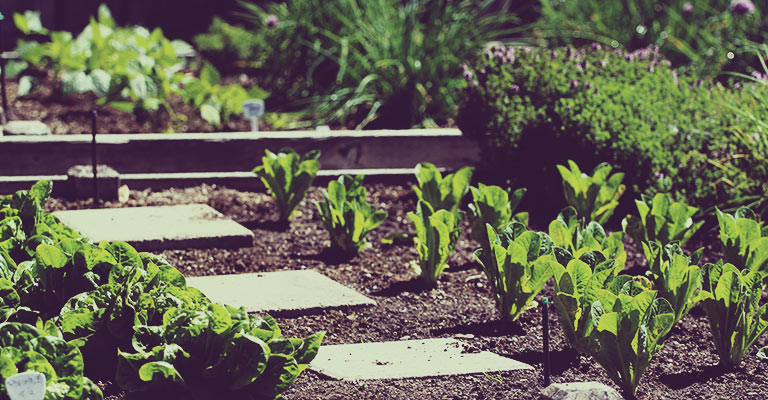
The right plan leads to more good tastes, less food waste. Homegrown produce just seems to taste better... and there's a reason. Corn, beans, peas, tomatoes and other vegetables taste best when they're fresh-picked.
Store-bought vegetables often have to be picked days ahead of when they appear on the produce shelves, and sometimes that means they're picked a little greener, and allowed to "ripen" in transit. With your own vegetable garden, you can pick them when they're at the peak of perfection.
The best vegetable gardens start with two solid foundations: good soil and a good plan
Your soil can be improved by ensuring there is good drainage, and lots of organic matter present. Compost is one of the best soil enhancers you can possibly find. If you're not already composting, start soon. It's a great use for food scraps (except for meats and dairy products) and an ideal way to "recycle" leaves, grass clippings and garden vegetation. If you don't have compost, try mixing some peat moss or composted manure into the garden.
Take the time to measure your garden area, and draw it out on paper. That way, when you're at the garden center, standing in front of the seed packet display, you won't be tempted to pick and choose like you would at the salad bar. This approach is a recipe for frustration.
Take time to lay out your garden
Relate choices and number of plants to timing. A dozen heads of lettuce may not sound like a lot, but it is if they're all ready on the same day. If you need more, consider earlier and a later- maturing varieties. You could also plant the same variety at one or two-week intervals. Just make sure they will have time to mature before frost is likely.
Plant vegetables your family will enjoy eating (i.e. you can probably get Junior to weed the peas more easily than the turnips, if you're making the garden a family project).
Make sure you allow enough room for each type of vegetable to get the light it needs, and grow to the full size. Once the risk of spring frost has passed, you can plant seeds or transplant directly into the garden. Or if you prefer, you can start them indoors in containers and then transplant.
How to use mulch and fertilizers
Once the soil has warmed up (later in the spring) it's a good idea to apply mulch around the plants to conserve moisture and prevent weed growth. Use straw, sawdust, leaves, bark or manure. Another option is to lay plastic film or paper on the ground, and poke holes through it for your vegetable plants.
Once the garden is established, it will benefit from regular weeding, watering and feeding. Use a good quality fertilizer, with a NPK rate of 4-6-8.
Control pests in the garden
You'll have to keep a constant watch for all kinds of pests, too. All kinds of critters, from rabbits to insects will want to help you enjoy the garden. Fences will keep out the larger types, while a variety of options are available for insects.
If you can, control insects by picking them off by hand or use mild pest control products. Remember to always read the label and follow the directions carefully. Make sure the plants you want to treat are specifically listed on the label.
Subscribe to our newsletter to receive our gardening tips, news and more directly in your inbox! Fill in the form below. Please note that fields with an * are required.